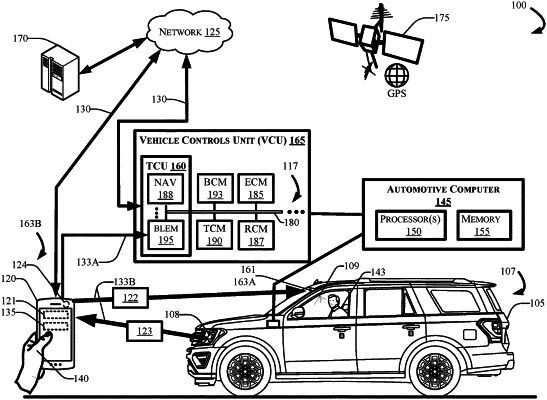| CPC H04L 9/3247 (2013.01) [G06Q 50/30 (2013.01); G06T 11/00 (2013.01); H04B 10/116 (2013.01); H04L 9/3073 (2013.01); H04L 9/32 (2013.01); H04L 63/0876 (2013.01); H04N 21/44008 (2013.01); H04W 12/06 (2013.01); B60Q 1/482 (2013.01); B60Q 1/50 (2013.01); B60Q 5/00 (2013.01); G06Q 2220/00 (2013.01); H04L 2209/84 (2013.01)] | 20 Claims |

|
1. A method for generating a vehicle identification using a mobile device, comprising:
connecting a mobile device application with a ridehailing application server;
connecting a vehicle computing system associated with a vehicle to the ridehailing application server, wherein the vehicle is a ridehail vehicle assigned to a user associated with the mobile device application;
sending, via the mobile device, a vehicle identification (ID) request message to a vehicle computing system, the vehicle ID request message to establish a visual light connection (VLC) between the vehicle and the mobile device;
identifying the vehicle via a vehicle ID and a cryptographic vehicle key of a cryptographic key pair;
determining that an intermittent or temporary obstruction exists between the vehicle and the mobile device;
sending, by the vehicle and based on the determination that the intermittent or temporary obstruction exists, the vehicle ID and the cryptographic vehicle key to a second vehicle; and
identifying, by the mobile device, a light communication emission comprising the cryptographic vehicle key, wherein the light communication emission is generated using an interior cabin light of the second vehicle instead of the vehicle.
|